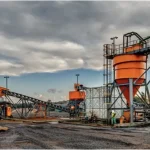From being a hands-on, artisanal industry founded on mechanical engineering and chemical processes, mining has become a hi-tech sector that employs sensors, data science and information technology to drive safety and efficiency. Helping to drive this new trend is the evolving field of telematics.
Telematics uses satellite navigation, sensors, onboard diagnostics, telecommunications, and data analytics to track vehicles, gather data and enable insights to enhance safety, boost production, and ensure legal compliance. Globally, telematics and data technology are taking root in the mining sector. For mining to be viable, teams must move earth as efficiently as possible, by monitoring fleets constantly, designing routes and usage rosters, conducting training and managing performance output to ensure the most effective deployment of staff and the mine fleet – all in real time.
Mines are dangerous environments, and the Department of Mineral Resources and Energy (DMRE) requires that mining companies adhere to stringent health-and-safety regulations. The Mine Health and Safety Act require that employees be protected against collisions with trackless mobile machines, which has made collision-avoidance systems mandatory for all mining vehicles.
For instance, Netstar’s telematics-equipped Collision Avoidance Proximity System (CAPS) uses sensors that can trigger automatic slowing down (level 8) and stopping and/or avoidance (level 9) when pedestrians, vehicles and machinery enter a certain proximity. The system also collects real-time data, interprets it, then audibly and visually warns vehicle operators of a potential collision (level 7 intervention).
Telematics tackles safety, security, and illegal mining concerns
By October 2022, only 38 South African mine fatalities had been recorded for the year, down from 74 mine fatalities the year before. Mine deaths have been dropping consistently over the past two decades, thanks to ongoing safety interventions such as telematics technology. Telematics-driven collision-avoidance systems are a game changer that helps protect lives and ensure fewer delays due to accidents.
Telematics can prevent unauthorised use of equipment, and it can function as a historic record of an incident when it comes to damage and injury claims. There is also an opportunity to further enhance mine security and help combat illegal mining or “zama zamas” through the tracking of miners and equipment in legitimate mines.
A recent investigation found that some illegal mining operations are working inside regular mines, using access cards to clock in as regular mine employees. In future, telematics can be used to identify irregular movement, and ensure work teams remain stationed in allocated shafts.
Through telematics and the use of artificial intelligence (AI), mine owners can manage risk, and avoid unnecessary downtime due to misuse or repairs. AI can also proactively notify mine and fleet managers when equipment is faulty, due for service, or needs to be replaced.
Human error accounts for 90% of driving accidents, often due to fatigue. Wearable IoT technology, such as health monitor watches, and AI-based driver-fatigue monitoring systems, addresses this. Wearable tech protects drivers and other users of mine roads, warning of possible worker fatigue and providing alerts before it becomes a safety risk.
Increased safety also means fewer events, and lower investigations and claims costs. Health monitors provide telematics data that the back office can view on a cloud-based software platform. Mine managers can then review this to plan better routes, traffic and employee-equipment interactions.
Telematics usage is growing at a massive rate and mining operations across the world have seen the importance of extracting this data. It’s not only about making mining safer, but about building a more efficient company.















